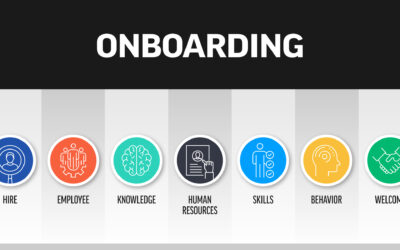When it comes to delivering on the promise of an improved customer experience, property/casualty agency principals often feel like they are caught in the middle of a tug-of-war.
Pulling the rope on one end are younger digital-native customers, as well as baby boomers who may not be digital natives, but who are increasingly digital-first consumers, both of whom crave personalized, seamless experiences. Tugging on the other end are the carriers and managing general agents who must achieve profitability despite the stressors of claims inflation, economic turmoil and regulatory pressure.
Agents stand in between these two opposing forces, and it can feel intimidating. However, it also brings a tremendous potential upside. Today, independent agents have a once-in-a-generation opportunity to truly revolutionize their CX, enhance the value they bring to their clients, and elevate the entire industry.
Understanding the opportunity
The best way to understand the state of CX in our industry is to ask the consumers. In December 2023, our team commissioned Censuswide, an independent market research consultancy, to survey U.S. and U.K. consumers.
On the one hand, the results showed a bit of promise. In the U.S., 46% of consumers said they have a positive perception of our industry. On the other hand, the results revealed plenty of room for improvement. Fifty-two percent of U.S. consumers said their perception of insurance was either neutral or negative. Agencies should view this indifference as a motivator to become much better partners with their customers.
What are consumers seeking in their insurance experience? Sixty-three percent of U.S. customers want lower costs, which isn’t surprising in an inflationary economy. Agents may have little influence over policy pricing, but they do have control over other key areas that consumers deem important. In particular, there are two areas that agents should focus on: transparency and personalization.
Transparency
More than one-quarter (26%) of consumers across the U.S. and U.K. listed an inability to “understand policy terms and coverage in a reasonable time” as their No. 1 pain point in their buying journey. Another 25% of respondents expressed disapproval about a lack of transparency regarding premiums and fees. What’s more, 18% of U.S. consumers said greater transparency and trust would encourage them to switch insurance providers.
These results shine a light on a simple-but-often-forgotten truth: consumers want to know exactly what they are buying. In my opinion, where the friction exists is that the language of insurance—including terms like aggregate limit, loss run, coverages, premiums and others—creates distrust among customers. Agents who can simplify the jargon and help customers understand the value they receive will improve their CX and win more business.
Personalization
Twenty-one percent of U.S. and U.K. consumers want insurance products personalized to them. In the U.S., 18% of respondents say a more personalized experience would encourage them to switch insurance providers. Agents can take a bold first step in personalizing their CX by meeting consumers on their channel of choice, seamlessly, whether it’s online, on a smartphone or in-person.
There is a long-held perception that only younger generations crave digital experiences. Yet anecdotally, I believe that is changing. I use the example of my 83-year-old father. He spends more time on his smartphone than I do. If he needed insurance, I could imagine him going online to research the product. Then, if it met his needs, he would call or visit an agent’s office to have his remaining questions answered. That doesn’t mean agents should move all their business online. Instead, it stresses the importance of providing optionality to create a seamless insurance journey based on each customer’s individual preferences.
There is a third CX trend worth watching. It’s a desire for one-stop shopping. Ideally, consumers would like to buy all their insurance products—homeowners, auto, life—from the same provider. This one isn’t easily solved by agents or even carriers and MGAs right now.
Rewriting the narrative
For most consumers, buying insurance is compulsory. They have multiple risks to protect, and while they understand insurance can help them mitigate those risks, they don’t necessarily want to buy insurance. Complicated insurance products and complex processes make their journey that much harder.
This is where the gap often exists between consumers and independent agents. Consumers crave simplicity, while agents grow concerned that simpler products lessen their importance and potentially even make them irrelevant.
Yet, there is a viable middle ground. Agency principals can future-proof their businesses and provide value to consumers by expanding their role as trusted advisers. This type of service is precisely what consumers crave—particularly members of younger generations.
According to research from Chubb, 53% of millennials and 40% of Gen Z individuals seek agents and brokers whose services match their goals. Forty-six percent of Gen Z consumers want their agents and brokers to tell them what decisions to make. Furthermore, our research reveals that 18% of 18-to-24-year-olds, and 23% of 25-to-34-year-olds see “being able to speak to an advisor” as a good marker of service.
Providing tech-enabled services
Agencies can strengthen their role as advisers—and win over more customers—by investing in technology solutions that enable them to deliver a better CX. One of the best places to start: helping customers reduce the time it takes to fill out forms.
Old, clunky technology can make it nearly impossible for agencies to accelerate this process. When agents need to toggle through multiple screens and input the same information onto numerous forms, it erodes customer trust. In fact, 23% of consumers say the time it takes to fill out forms and enter personal information is a major pain point in their buying journey.
This is when technology can bridge the gap between consumer wants and agency needs. By automating key parts of the process, technology can help agents price policies faster, simplify the documentation process and give agents more time to advise their insureds and provide outstanding client service.
Furthermore, the rise of artificial intelligence-enabled platforms can open the doors to multiple new possibilities for independent agents. Consider the value agents can bring when they use AI to improve lead generation and identify the next best steps for consumer interaction. Imagine how agents can empower personalization by leveraging AI to gain valuable insights into customer behavior, preferences and risk profiles. Envision the possibilities of how AI engines and their large language models might convert policy language into simple terms consumers can understand.
The key to leveraging all this technology, from an agent, broker, carrier and MGA standpoint, is to use vendors that keep customers top-of-mind. Historically, one of the perils of product development in insurance is that companies focus more on what will bring them profitability and less on their customers’ wants and needs. By choosing digital products that are purpose-built to solve consumers’ pain points, everyone in our industry will play a role in bridging the CX gap successfully.
Seizing the moment
For many independent agents, the road to an optimal CX starts with positioning service over product. Three ways to do so:
No. 1: Become part of the service offering. The biggest value an independent agent can provide is to simplify every part of the process. Embrace a mindset of efficiency. Seek ways to help customers take as few steps as possible to complete their purchase journey. Make it easier for them to understand their coverages, limits and payments.
No. 2: Accelerate claims payment. Agents who articulate the value their insureds will get in the event of a claim will win the day. The key selling point here is speed. Our research shows 26% of consumers see the ability to make claims easily as part of a frictionless consumer experience, and 16% of consumers will switch to providers that offer faster claims payment.
No. 3: Leverage technology. This is especially important for agents who work with multiple carrier partners. Having a modern agency management system or consumer relationship management platform can help agents manage their own books of business and work seamlessly with their carriers of choice. Additionally, agents should look to partner with carriers that use cloud-based, flexible solutions. Ask for use cases that show how their platforms deliver tangible value to both agencies and customers.
Changing the rules
Tug-of-war is a contest agency principals cannot win. However, when agents rewrite the rules of engagement to work better with both sides, they can successfully change the game. Agents who use technology to enhance their value to customers will pull consumers, carriers and MGAs toward them, creating better relationships and forging a path toward continued profitability.

Geoff Keast
Geoff Keast is the vice president of sales for INSTANDA, a global provider of no-code insurance platform technology. In his role, Geoff manages the company’s U.S. sales and account management operations. Previously, he spent seven years at Montoux, a generative AI cloud-based platform for actuaries, including four years as the company’s CEO. He also held leadership experiences with Fiserv and ABnote.






